While admittedly not the most exhilarating topic out there, I really enjoy digging down into the names of the various characters, items, attacks, and villains in the Sailor Moon universe. Not only is it an interesting intellectual exercise, but it also gives you some insight into what Ms. Takeuchi had in mind when she was sketching out and creating the characters’ personalities.
Speaking of which, it’s pretty impressive just how much she was able to research when you consider that the series was created in an age before the internet had really hit its stride.
Today we’re going to be turning our magnifying glass to the members of the Shadow Galactica, and where the inspirations for their names come from. Stick around, this is gonna get interesting!
To be totally honest, I have mixed feelings about the Shadow Galactica as an Institution of Evil™ when viewed in context of the Sailor Moon universe.
Specifically, the size/scale of the group seems a little off to me.
While most of the other enemy groups, with the exception of the Death Busters, gave the impression of being kingdoms, planets, or circuses full of people,1 the Shadow Galactica just seems to be Sailor Galaxia and a handful of her minions. The anime is even worse, since they don’t even really bother to imply that there’s anyone else outside of the Sailor Animamates.
But enough about all that, let’s get this started!
Shadow Galactica
Though admittedly a cool name in English, the Shadow Galactica is rendered in Japanese as 銀河の影 (ginga no kage),2 or literally “the galaxy’s shadow,” which is a much less cool name.
If you interpret the Silver Millennium as the “Galaxy” and Sailor Galaxia as the polar opposite of Sailor Moon/Cosmos, I guess that makes enough sense that you could see them as a reverse, evil side of the Galaxy.
As an aside, while there’s really no solid evidence either way, it’s entirely possible that the word “galactica” itself comes from Battle Star Galactica. Though originally written as ギャラクチカ (gyarakuchika) when it first aired on TV in Japan, by the time the 1980 series came around, the name had been updated to ギャラクティカ (gyarakutika), which is how the word is written in Sailor Moon.
But that’s really just a guess.
Sailor Galaxia
Pretty clearly named after the word “galaxy,” I’m actually quite surprised that she isn’t actually just named Sailor Galaxy, especially when you consider that nearly every Sailor Soldier is named after a celestial body. And then there’s the whole Sailor Cosmos thing, too.
To be fair, by the time we made it to Sailor Stars, the series was doing a lot of weird things with naming, like with the whole Sailor Kakyuu thing, so I guess it’s not all that strange.
The Sailor Gardeners — Sailor Phi & Sailor Chi
While it’s obvious that these two characters are named after the Greek letters of the same name, Φ and Χ respectively,3 what’s far less obvious is just why in the heck they’re named after letters of the Greek alphabet in the first place.
The best explanation that I’ve seen is that their names are in reference to stellar Bayer designations.4 In 1603, German astronomer Johann Bayer created a star cataloging system for his star atlas titled Uranometria. The brightest star in a constellation was giving the designation α (alpha) which was combined with the name of the star’s parent constellation in genitive/possessive case (meaning that, for example, Centaurus = Centauri).5 Using the Centaurus constellation as an example, the brightest star in the constellation would be called α Centauri, the second brightest β Centauri, and down the line he went through the Greek alphabet.
Though just one case of many examples, φ (Phi) Centauri and χ (Chi) Centauri are both real stars existing in the Centaurus constellation.
Since they’re both pretty far down the line (the 21st and 22nd letters of the Greek alphabet respectively) that would mean that any stars with these designations are relatively dimmer to their counterparts and kind of makes you question why the Star Gardeners are actually some of the most powerful of Sailor Galaxia’s minions, but this explanation does give us a star angle, so I’m okay with it.
Sailor Lethe
Named after the river of forgetfulness of the same name from Greek mythology, Lethe was one of the five rivers of the underworld. When the denizens of the underworld drank from the river, they would forget their earthly lives, which would finally give them a chance to be reincarnated.6
Lethe was also the name of a goddess and personification of forgetfulness and oblivion.
Sailor Mnemosyne
According to Greek mythology, Mnemosyne was the goddess of memory who presided over a pool in Hades, serving as a counterpart to the river Lethe.7
But that’s not all! According to a few Greco-Roman mystery religions,8 there was an even greater connection between Lethe and Mnemosyne:9
A few mystery religions taught the existence of another river, the Mnemosyne; those who drank from the Mnemosyne would remember everything and attain omniscience. Initiates were taught that they would receive a choice of rivers to drink from after death, and to drink from Mnemosyne instead of Lethe.
This seems to definitely be the reference that Ms. Takeuchi was going for in her story.
Chaos
And just for the sake of being thorough, last on this list is Chaos!
While I’m sure that everyone is familiar with the concept of (lower-case “c”) chaos, we once again need to go back to Greco-Roman mythology to answer this one.
In the Greek poet Hesiod’s earliest work, Theogeny,10 he explores the origin of the world and of the gods. He claims that Chaos (upper-case “C”) was the first thing to exist, and out of Chaos was born darkness and night.11 In addition to being an entity, Chaos was also a place located below the Earth.
It’s my sense that this is the Chaos that Ms. Takeuchi was referring to when she was writing the story, rather than the straight-from-a-dictionary chaos.
And that about sums up this review of the cast of characters serving in the Shadow Galactica!
The biggest mystery that remains for me is just what’s going on with Sailor Phi and Sailor Chi’s names. While I like the theory that their names are in reference to the Bayer designations, especially since it implies that they’re from the same star constellation and it also nicely explains away Sailor Theta from the musicals, the connection seems pretty weak, and I wonder if it’s a false positive.
So what do you think? Coincidence, good explanation, maybe something in between? I’d love to learn more about the Sailor Gardners, since they had such a small part.
References:
- Yes, I am willing to argue that a circus is totally on the same level as the entire planet of Nemesis ↩
- See Vol. 11, Act 52 of the original manga release ↩
- See Phi (Wikipedia) and Chi (Wikipedia) ↩
- See Bayer designation (Wikipedia) ↩
- See Genitive Case (Wikipedia) ↩
- See Lethe (Wikipedia) ↩
- See Mnemosyne (Wikipedia) ↩
- And by “mystery religion” I don’t actually mean that it’s a mystery, but rather that they’re called “mystery religions”; see Greco-Roman Mysteries (Wikipedia) ↩
- See Lethe (Role in Religion and Philosophy) (Wikipedia) ↩
- See Hesiod (Works) (Wikipedia) ↩
- See Chaos (Cosmogony) (Wikipedia) ↩
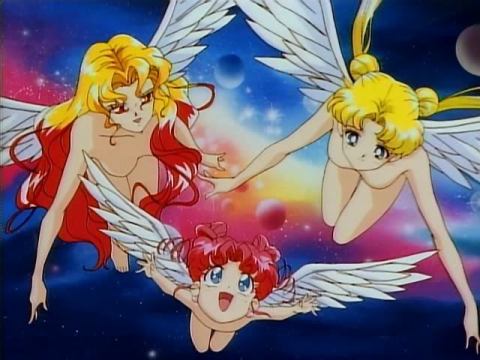
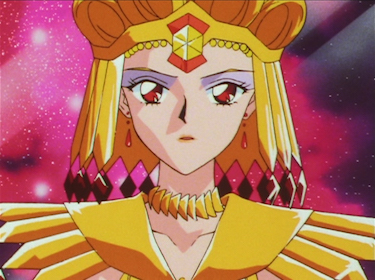
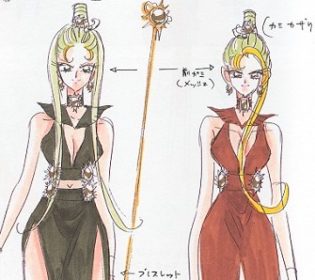
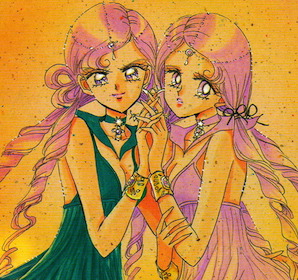
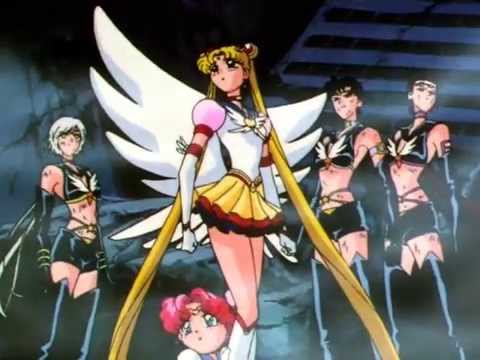

Funny, I was thinking about Galaxia´s name recently. In our language, the word for galaxy is literally “galaxia”, and it felt strange compared to the rest of the names, which are completely in English, un-edited. Since the word in japanese sounds quite different, it´s even more confusing.
Hmmm didn’t have to look too far for this one…
https://en.wikipedia.org/wiki/Phi_Andromedae
As the “South Gate” to Sailor Galaxia’s hideout, I’d say it’s more about the Stars themselves than their brightness ;).
Wow, didn’t take long at all! =D Awesome — thanks! Glad to see that there is some sort of connection, and that they’re a binary star pair.
I suppose it makes sense to write Galaxy as Galaxia (the Latin writing, also used by most modern Romance languages), as it fits the whole Classic Mythology theme. IMO it also sounds more exotic and elegant with the A at the end.
Two little observations about the Bayer designation: 1) it is wildly inaccurate, so the order of the letters rarely corresponds to the relative brightness of the stars in any given constellation (occasionally, stars with similar brightness are named by star-rise order, so Alpha rises before Beta an so on); 2) it is about apparent magnitude, not absolute magnitude, meaning that what factors is a star’s brightness as perceived from Earth. Nearby dimmer stars might appear brighter in the sky than far-away luminous ones, so Chi and Phi is no indicator of a star’s effective brightness and, thus, the Senshi’s relative power.
On a symbolic level, though, Sailor Chi and Sailor Phi are the vilest, most evil members of Shadow Galactica bar Chaos itself (even Manga!Galaxia is more sympathetic), so the relative dimness might allude to just how corrupt and evil they are.
Having to guess what specific celestial body they refer to, I’d point to Chi and Phi Sagittarii, considering Galaxia’s hideout is at the center of the Milky Way, which is in Sagittarius. (I checked Ophiuchus, Scorpio and Serpens, the other constellations near the Galactic Centre, and Chi and Phi are all too far away to be of any significance).
At some point in the 70s, Chi Sagittarii became infamous as the nearest visible star system to the source of the Wow! signal, a brief radio signal that to this day remains the strongest candidate for an alien broadcast. Maybe Naoko was referencing that, and Phi is simply the next letter in the Greek Alphabet.
Galaxia is probably not named after the English word galaxy, but the actual latin word galaxia, which means milky (as in Milky Way). So her name reflects our galaxy, the Milky Way, rather than the English word, galaxy, which derivate from the latin term galaxia. This was written by a Japanese person after all so it seems more accurate that was what Naoko went for.